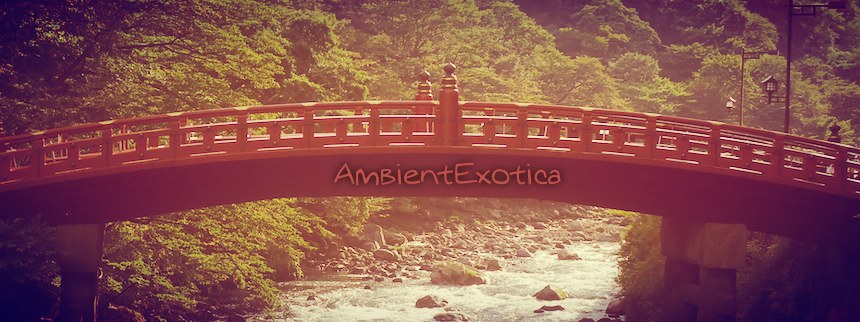
Phil Moore & Leda Annest
Portrait of Leda
1958
Portrait Of Leda is a mysterious Exotica/Space-Age artifact composed and envisioned by Jazz pianist Phil Moore (1918–1987), beloved by Exotica listeners for his aesthetically successful and invaluable Polynesian Paradise (1959). Brought to life by the sylphlike and octave-flipping soprano voice of Leda Annest and released in 1958 on Columbia Records, the album lives and breathes arcana and mysteries aplenty. Back then, you could fool listeners and cinephiles alike much easier than today, and it so happens that many a beady-eyed bachelor mistook the figural-fictitious Leda for the real Mrs. Annest. And truth be told, the album plays with these expectations and devotional aspects time and again. Three large compounds are featured, each of them running for more than ten minutes, encapsulating three to four movements of highly different moods which allow Leda Annest to bring her character of Leda to life; all of this happens without a single comprehensible word, as Leda is a true-bred Space-Age creature, keen on delivering wordless vocals only.
Jazz and Classic meet to form a Jazz-Symphonic Concerto with said transcendental particularities as well as timbres, but Exotica is firmly in place as well, rolling along via multitudinous drums and the occasional segue of lure. Before I forget it: the comparison of Leda Annest with the Queen of the Andes Yma Sumac is unpreventable and one of the most-often used pairings since the appearance of Martin Denny and Arthur Lyman in one too many sentences, but there is another dame that has sufficiently more in common with Leda than Mrs. Sumac: Marni Nixon, Exotica’s less-mentioned yet crucial soprano enchantress who graces LP’s such as The Markko Polo Adventurers’ Orienta (1959) or The Out Islanders’ Polynesian Fantasy (1961) as well as many soundtracks and movie scores. Here is a meticulous look at a mysterious woman about whom the liner notes (neglect to) reveal anything: “Who, then is Leda Annest? Well, to start with the obvious, she is a girl who sings.”
One specific comparison to Yma Sumac is applicable, but not the way one might think. The first portion of the triptych, titled Portrait Of Leda Part I, opens in a refreshingly pompous and bursting fashion, resembling the brass-fueled staccato of Moises Vivanco’s compositions he wrote for a certain wife of his called… Yma Sumac. Especially her album Mambo! (1954) comes to mind, the first corker that replaced the esoteric mountain ranges with bodacious bodega abodes. Phil Moore’s prelude resembles this fashion, but then ventures into mysticism coupled with uncannily murky Space-Age particles.
The listener is still waiting for the first tone of Leda, but in the meantime, polyphonic flutes, eldritch timpani and sinisterly rufescent string washes unfold. Downwards-spiraling pianos of madness mesh with two-note string convulsions until Leda appears after almost three minutes, her voice quavering and trembling. Yearning, maybe even wailing, the scenery shows Leda in a polyvalent light: fragile yet strong. She seems to be in sorrow, but the quiescent accompaniment of the strings, reeds and the piano puts her into the spotlight. Soft harp twangs round off the dubious backdrop. After approximately seven and a half minutes, Part I morphs into a cautiously hinted femme fatale theme with piercing horns, that archetypical Jazz rhythm with sleazy hi-hats and an added triangle galore. The tone sequence rises and makes room for a big band (!) section, showcasing Leda’s fury and true power. The shift is magnificent to this day, and all of this not just happens in one compendium, but the first part of it already!
Portrait Of Leda Part II is tailored to Exotica fans while retaining its Space-Age aura and twilight shadow play. Cavalcades of drums and textures rumble and bubble in the opening section of the second part, nurturing and maintaining a bustling scenery of a rather cheeky and much more upbeat Leda. Bongos, congas, goblet drums, sweeping shakers unite; the aorta is Latin. Child-like la la la chants of the chica rubia find their instrumental foil in the effervescent flute dots, the tempo is mercilessly fast and stands in high contrast to the symphonic and shapeshifting opener.
The gestalt of Leda does of course change in Part II as well, and soon enough the joyful exhilaration is toned down in a motionless standstill scene without drums, but all the more threnody. Shadowy trombones and clarinets evoke that enigmatic darkness yet again, even the ethereal Space-Age strings prefigure a darkly lilac moment of portent. Luckily, the final section of Part II is once more a lively place, with towering brass pikes, incisive bongos and a superb interim apotheosis depicting Phil Moore’s show tune-like craftsmanship in all its glory. Leda remains silent in this last stage and lets the orchestra take over the enchantment. The euphony remains off-key; moments of elation are cross-pollinated by dark matter scythes, and in the end, no one can say whether the carved out happiness is as complete as it may seem. Side A is over.
Side B is unsurprisingly reserved for the magnificent Portrait Of Leda Part III, the grand finale of almost 18 minutes. When I write that this part showcases a “business as usual” attitude, rest assured that this is no extra-long appendix to the same formula, but yet another showstopper in terms of vivacity, transcendence and a reticulation of countermovements and dangerous undercurrents. The opening section is comparably mellifluous, with the helicoid horns and susurrant strings wafting around Leda’s similarly rotatory soprano voice. Phil Moore injects a short piano solo, with its timbre being golden and translucent, although the adjacent double bass ctenidium is an ominous force.
A string-augmented scene then leads to an encore of the femme fatale theme of Part I, now almost played over the top qua the Hollywood-compatible brass splinters and droning foils which are rounded off by weirdly plinking guitar globs. The synergetic tohubohu even reduces the power of Leda Annest’s presence, at least temporarily so. The centroid apex sees a prolonged solo and rustic piano arrangements by Phil Moore before warped wah-wah trumpets grasp the rhizomes and let the formerly earthbound concept venture into the ether or purgatory, I’m not so sure about the actual location. One thing is for sure: the megalomania, amount of layers and sinews is not going to end until the disc stops spinning. Magnitudes of strings, horns and timpani, reverse moods, tempos and focal points meet, clash and depart… before a screeching helix of spiky trumpets literally begs the listener to imagine a certain logo and lettering that appears every so often in the album’s decade, and there it is: “The End.”
The old disputes between Jazz lovers and Modern Classical admirers have been dished up time and again, so who am I to repeat them here in this context? There is only one particular thing that could potentially diminish the aura of Portrait Of Leda, depending on the respective listener: the three movements are very long and could have been portioned, for they are clearly stitched together and comprise of several vignettes. I for one am glad about the longevity and duration of each Part, for they turn Portrait Of Leda into something greater and more meaningful by means of this extrinsic factor alone. Now imagine how vivid the music must be! Pianist and conductor Phil Moore has created a classic that sits on the brink of Exotica, Space-Age and a touch of Third Stream cacophony.
Leda is a fascinating creature, she is, according to the liner notes, “the ghost, the face in the window, the unforgotten memory of something we never knew.” This is the second clever ploy that makes the album so vivid: one man’s Leda is another man’s bride, you can transform and alter this sylphlike being, she is only aurally painted here in sketchy form. She does not even say a word that is open to scrutiny. Mystery, dangers and emancipation are thus all the more powerful and pressing constituents of the portrait. There is no ultimate meaning applied to the album, just one thing is for sure: this is not – I repeat: not – Easy Listening material! In terms of the rigorous riots, various victories and pending problems Leda faces, the album delivers an omnium gatherum of pipe dreams, short stories and coincidental happenings that all revolve and evolve in and around Leda. Yes, Yma Sumac fans ought to check it out not just for the vocal parts, but the instrumentation and majestic orchestra as well. This is luckily easy: the album has been reissued and coupled in 2010 with Fantasy For Girl And Orchestra (1947/1956). Only Polynesian Paradise is amiss, but that’s a painful topic for another day. In the meantime: Leda, be mine.
Exotica Review 323: Phil Moore & Leda Annest – Portrait Of Leda (1958). Originally published on Mar. 15, 2013 at AmbientExotica.com.
